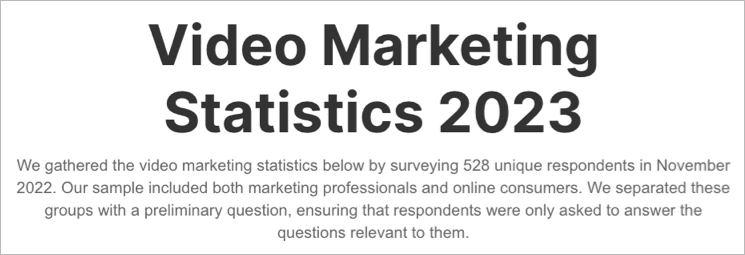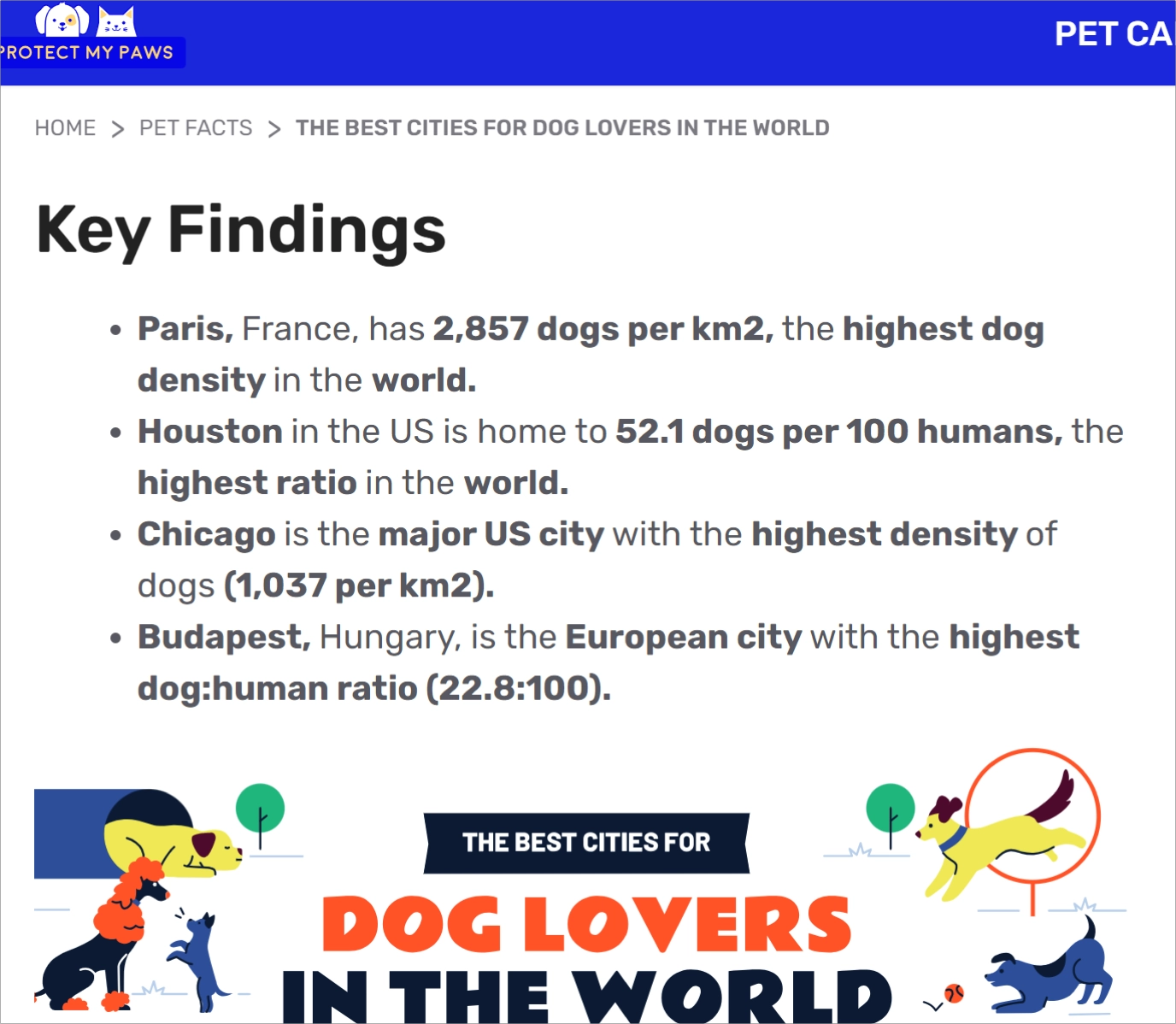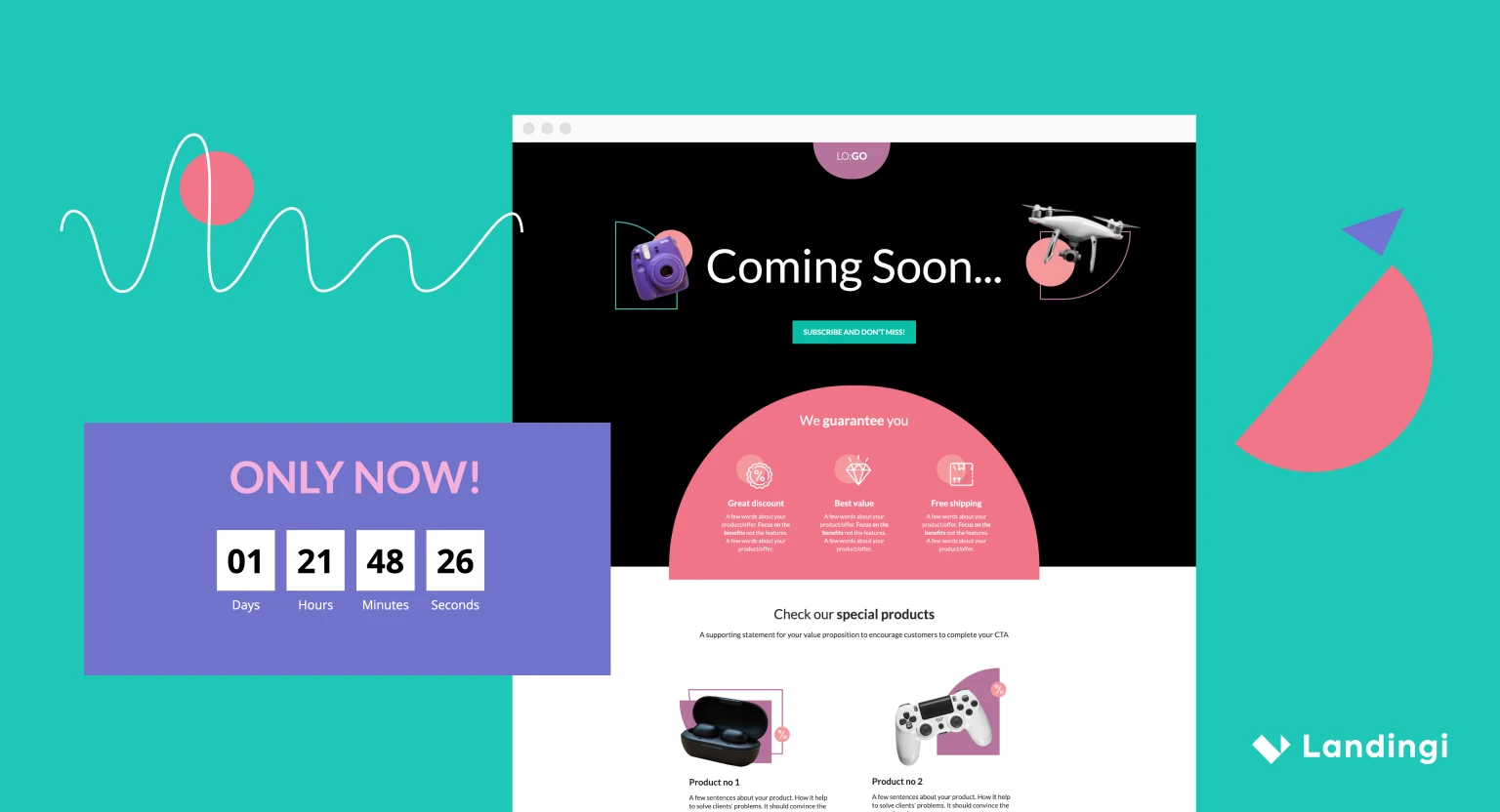Think of your favorite coffee shop. Why do you keep going back? Sure, they might serve good coffee, but there’s something else, right? Maybe it’s the cozy ambiance, the friendly barista, or the way they remember your usual order.
Similarly, your blog is a tool for generating traffic, amplifying product awareness, and lead nurturing. But peel back those layers, and there’s an underlying truth: Every post, every infographic, and every video you share is a brushstroke painting the picture of your brand.
Each of your blog posts isn’t just a read. It’s a taste of your brand’s essence. So, you shouldn’t let your blog content misrepresent your brand. If every article you post shapes your brand’s perception, you’d want to make sure it’s a perfect blend.
This article will help you make sure that you’re publishing content in a way that aligns with your core brand values.
Make your sections smartable and let go of mundane manual tasks with Smart Sections! An easy way to manage bulk changes.
Focus on Customer Needs over Sales
Don’t let your blog become a sales megaphone. Let it be a resource hub, a consultant, a friend in the know. Prioritize your customer’s needs in your content strategy, and the sales will follow. Because when your brand focuses on helping over selling, everyone wins.
Let’s unpack why this approach works and how you can integrate it into your own blog strategy:
- Establish trust by providing value:
The internet is cluttered with sales pitches. Stand out by offering real, actionable advice. Not only will this make your readers trust you, but Google also rewards high-value content with better rankings. - Build long-term relationships:
Immediate sales are great, but a customer who trusts you is a customer for life. By focusing on their needs, you’re laying the foundation for a long-term relationship that’s likely to result in more sales down the line. - Enhance brand equity:
A blog that focuses on helping rather than selling enriches your brand’s equity. This builds a reservoir of goodwill and positive association around your brand, which is invaluable in the long run. - Strategic subtlety:
If your blog post genuinely helps the reader, they’re more likely to be interested in your product or service. That’s the time for subtle brand mentions or soft CTAs, seamlessly woven into the content so that they feel like a natural part of the conversation rather than an interruption. - Metrics that matter:
While immediate conversions are straightforward to measure, don’t underestimate metrics like customer engagement, time on page, and return visits. Monitor microconversions to identify key obstacles in users’ journeys and get a clear understanding of their behavior. These KPIs offer rich insights into how effectively your content is building a relationship with your audience.
To get a better sense of this tactic, let’s dive into a real-life example:
Imagine you’re planning a trip and hunting for the best flight deals. You Google “How to use Google Flights to find cheap flights,” and a detailed 4,500-word article from Going pops up. They are a platform that offers cheap flights and airfare deals, but they decide to guide you through the labyrinth of Google Flights while also tossing in handy hacks for scoring the cheapest fares.
The kicker here are the subtle mentions of their own service, strategically placed to inform, not sell. That, right there, is a game-changer because Going prioritizes your need for information over their desire to make a quick sale.
That way, they ensure you trust them more, even subconsciously associating their brand with value and customer-first attitudes. Next time you need to book a flight, guess who’s top of mind?
Get 111 Landing Page Examples—The Ultimate Guide for FREE
Pro-Tip: It’s profitable to move direct sales communication to your landing pages, which are a perfect place to drive conversions. This way, your blog will maintain its authority, serving as a great lead-nurturing tool, while landing pages will be the next point for those who are ready to make a purchase.
Establish Yourself as a Genuine Thought Leader
Repackaging existing info can be valuable, for sure, but taking the leap from info-curator to thought leader? That’s brand-building gold.
Here’s how you can be a thought leader in your domain:
- Dive deep into research:
Conduct surveys, polls, or even simple social media questionnaires to gather data that hasn’t been explored before. It takes effort but pays off in brand respect and visibility. - Spot the gaps:
Sometimes, it’s not about what everyone is talking about but what no one is talking about. Identify the knowledge gaps in your industry and fill them with quality content. - Innovate in presentation:
Originality isn’t just about what you say but how you say it. Invest in unique content formats like interactive infographics, animations, podcasts, or even webinars. - Be consistent:
A one-off research paper or case study won’t make you a thought leader. Consistency in publishing original content creates a library of resources that boosts your brand’s credibility over time. - Engage with the community:
Thought leadership isn’t a monologue. Keep the conversation going by responding to comments, hosting Q&A sessions, or collaborating with other thought leaders in your industry.
By embracing these practices, your brand becomes more than a name people recognize – it becomes a name they trust and seek out for the latest insights.
As an example, let’s talk about Wyzowl. This animated video production company doesn’t just tell you why video marketing is essential. They show you through comprehensive research. Their annual “Video Marketing Statistics” report is a much-anticipated event in the marketing world.
That’s because they’re not just summarizing others’ findings. They’re conducting their own research and offering fresh insights. This not only establishes them as an industry authority but also ensures that their brand is synonymous with cutting-edge information.

Another brand flexing its thought leadership muscles is ProtectMyPaws, an outlet in the pet care resources space. Instead of posting another “Top 10 Dog Breeds” article, which all of their competitors do, they went all-in with the “The Best Cities for Dog Lovers in the World” report.
Complete with interactive data visualizations and many interesting points, this blog post positions ProtectMyPaws as having genuinely unique insight into the topic. That’s how you get pet lovers to believe in your brand.

Align Your Brand with Reputable Science
In an era where misinformation can spread like wildfire, aligning your brand with reputable science isn’t just a smart move – it’s essential. Especially in sectors like finance and health, where the stakes are high, credibility is your ticket to customer trust.
So, let’s talk specifics: How can you inject a dose of scientific rigor into your blog?
Lean into reputable science, and you’ll send a crystal clear message: your brand values truth and integrity. You’ll make it evident that you’re not just about selling a product but about providing verified information that improves lives. When you elevate your brand-perception game to this level, you have content that generates leads and wins advocates at the same time.
To level up your brand through science-backed content, consider the following steps:
- Fact-check rigorously:
Make it a standard procedure to double-check data, statistics, and quotes. Highlight this process visibly to assure readers of your commitment to accuracy. - Consult experts:
Bring in professionals to review content, especially when it concerns specialized fields like medicine, finance, or technology. Mention their credentials and what they contributed to the piece. - Cite reputable sources:
Whenever you present data or claims, link back to the original scientific studies, peer-reviewed journals, or recognized experts in the field. - Be completely transparent:
If your blog post includes scientific terms or complex data, include a section that breaks down the jargon into layman’s terms. Transparency fosters trust. - Provide visual aids:
Use graphs, charts, and infographics to visualize data. Visual representations make complex data easier to understand and give it a more credible appearance. - Update and correct regularly:
Science evolves. If new data emerges that contradicts your previous posts, update them and communicate this to your readers.
For example, take a look at Eachnight, a website providing mattress guides and bedding resources. Their blog post “Hot Sleeper vs Cold Sleeper: What Type of Sleeper Are You?” doesn’t just throw around advice. It anchors it in science!
A “Fact Checked” popup details their rigorous verification process, and a separate popup even indicates the post was medically reviewed by a professional, complete with their credentials.
This allows their readers to not only read their blog casually but to consume trusted, expert-backed information.

Show How Seriously You Take Customer Service
What’s the one thing that can turn a one-time buyer into a loyal customer? Exceptional customer service! And what better way to showcase your commitment to customer satisfaction than through detailed case studies and testimonials?
By giving your audience a front-row seat to your customer service success stories, you’re doing more than showcasing your product’s benefits. You’re demonstrating your brand’s commitment to making customers’ lives better. And that’s the kind of brand story that turns visitors into loyal customers.
Here are some best practices for creating great case studies and testimonials:
- Be specific and data-driven:
Numbers don’t lie. Use metrics to demonstrate how your product or service has made a quantifiable difference. For instance, “increased customer retention by 20%” packs more punch than “improved customer loyalty.” - Narrative matters:
A case study should tell a story with a clear beginning, middle, and end – identifying the problem, describing the solution, and showcasing the results. - Customer spotlight:
Make your customers the heroes of the story. Use direct quotes and highlight how they benefited from your service or product. - Visuals are vital:
Whether it’s graphs to represent success metrics or videos for storytelling, visuals can make your case study more engaging and easier to digest. - Finish with a CTA:
End on a note that directs the reader on what to do next. Whether it’s contacting your sales team or checking out a product feature, make it clear and compelling.
We’ve got two examples for you to demonstrate this content marketing approach:
First up is HubSpot, the CRM mogul that’s practically written the book on customer-centricity. Check out their case study, “Crunch Fitness Increases Leads and Signups With HubSpot.”
This isn’t just a success story – it’s a blueprint for how it’s done. Every challenge, solution, and result is meticulously documented, complete with metrics that matter. The reader walks away not just impressed by HubSpot but educated on how to tackle similar challenges.
The second example is Zendesk, another CRM superstar. They take a different yet equally impactful approach with video case studies.
Their “Custom Zendesk solution helps Siemens drive agility and scale” is as close as it gets to a real experience. The use of video brings authenticity and emotion into the mix, making the case study far more relatable and impactful.
Communicate Topical Authority with the Breadth of Your Content
Ranking high on Google is great, but let’s go beyond the clicks. You want your readers to land on your page and think, “Wow, these guys really know their stuff!” That’s the point of topical authority. It’s not just an SEO buzzword but a brand’s virtual seal of expertise as well.
Here’s how you can build topical authority with your content:
- Cluster content:
Group related articles together and interlink them. This helps SEO and encourages readers to explore more of your content. - Anchor posts:
Create exhaustive, cornerstone pieces like all-encapsulating guides that can serve as the hub for various sets of related content. - Diverse formats:
Don’t limit yourself to blog posts. Incorporate podcasts, videos, webinars, and even whitepapers to provide a fuller, richer experience. - Relevancy over quantity:
One well-researched, in-depth post adds more value and showcases greater expertise than five superficial ones. Quality always trumps quantity. - Update regularly:
Topical authority isn’t a one-and-done deal. Keep your content fresh and updated to reflect the latest trends and information. - Audience engagement:
Use metrics and audience feedback to identify which topics resonate the most. Double down on those to solidify your topical authority.
By implementing these strategies, you’re crafting a knowledge center that’s a go-to resource for your target audience.
A prime example of this strategy is Aura, a company offering Amazon repricer software. Their blog isn’t a mere collection of random posts but a treasure trove of interconnected content.
“The Ultimate Guide to Retail Arbitrage on Amazon” post isn’t a lone wolf. It’s part of a content ecosystem, featuring over 20 contextual links to other relevant articles. That’s how you tell your readers, “Hey, we’ve got answers not only to this question but also to these other questions you didn’t even know you had yet!”
Humanize Your Brand
In a world increasingly driven by automation and algorithms, the human touch has never been more valuable. People are yearning for connections, a sense of community, and brands that treat them like friends rather than data points. Your blog can serve as a potent tool to let your company’s personality shine.
By revealing the human faces and stories behind your brand, you’re not only marketing but also building a community.
So, how can you bring the human factor into your blog?
- Team spotlights:
Introduce your readers to the incredible people that make your brand what it is. Share their stories, their aspirations, and their everyday joys and challenges. - A day in the life:
Show off the daily hustle, the collaborative spirit, or even the small, fun rituals that keep your team going. - Announcements with heart:
Whether you’re scaling up or launching a new product, tell the story behind the headline. Who made it happen? What obstacles did you overcome? - Culture chronicles:
Write about your company culture, the values that drive you, and the community service or social responsibility efforts you’re part of. - Interactive elements:
Incorporate Q&As, live streams, or real-time chats where your audience can get their questions answered by real team members. - Celebrate the journey:
Share not just your successes but also your missteps and how you’re evolving as a team and a brand.
Let’s consider Mailchimp, a marketing automation platform, as an example. They crafted a beautiful narrative in their post, “What We Learned Opening a Second Office in Our Hometown.”
This article isn’t just a dry corporate announcement. It was a heartfelt journey through the ups and downs, what they learned, and how they’re integrating those learnings into their brand culture. It’s this kind of openness and transparency that turns customers into loyal fans.
Buffer also nails this approach with a blog post titled “How a Change in My Role Inspired Six Impactful Habits.” This isn’t a high-level, detached article but a personal narrative by a Buffer employee discussing their career evolution within the company.
The post provides tangible takeaways for the reader while also humanizing the brand. You walk away feeling like you just had coffee with a friend who shared some career wisdom with you.

Wrapping Up
We’re done! You’ve got the expertise, the product, and the passion. But remember, at the heart of it all are real people – both on your team and in your customer base.
Through the strategies we’ve elaborated on above, you’re not just filling up web pages. You’re shaping perceptions, building relationships, and creating a brand people can genuinely love and trust.
So, infuse your blog with all the excellence and humanity your brand stands for. The results will surprise you, not just in metrics but in customer loyalty, brand reputation, and business growth.







